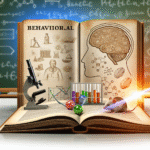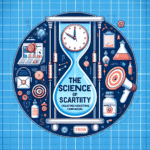
The Ultimate Guide to Creativity: Feel Free to Mix and Match Phrases or Modify Them to Better Suit Your Article’s Focus!
Introduction
In today’s fast-paced world, creativity is more than just a buzzword; it’s an essential skill that fuels innovation and problem-solving. Whether you’re writing an article, designing a marketing campaign, or brainstorming for a project, the power of creativity can make a significant difference. In this ultimate guide, we will explore the many facets of creativity and empower you to feel free to mix and match phrases or modify them to better suit your article’s focus! Embrace this freedom to elevate your work and harness the creativity that resides within you.
The Essence of Creativity
Defining Creativity
Creativity can be best understood as the ability to generate novel ideas, solutions, or expressions that add value. It’s not limited to artists or musicians; rather, it spans across all fields, from science to business. According to a study published in the Journal of Creative Behavior, creative people often share certain traits including open-mindedness, flexibility, and a willingness to experiment.
The Psychology Behind Creativity
Various psychological theories explain the concept of creativity. The Four Stages of Creativity model—incubation, illumination, evaluation, and verification—provides valuable insights into how creative ideas develop. By understanding this process, you can learn to harness your creativity more effectively and feel free to mix and match phrases or modify them to better suit your article’s focus!
Benefits of Being Creative
- Enhanced Problem Solving: Creative individuals find unique solutions to complex problems.
- Increased Adaptability: Creative thinking fosters adaptability, helping you navigate unexpected challenges.
- Boosted Confidence: The act of creating can enhance your self-esteem and sense of accomplishment.
Cultivating a Creative Mindset
1. Embrace Curiosity
Curiosity is the fuel for creativity. Ask open-ended questions and explore different viewpoints—feeling free to mix and match phrases or modify them to better suit your article’s focus!—can lead you to unexpected insights.
2. Change Your Environment
Your surroundings play a critical role in your creative process. For instance, rearranging your workspace or spending time in nature can stimulate fresh ideas. A study by the University of Michigan found that individuals who spent time in nature reported increased creativity.
3. Collaborate with Others
Two (or more) heads are often better than one. Collaboration can introduce new perspectives and methodologies. In a case study involving a design team, brainstorming sessions led to innovative product ideas by allowing team members to mix and match their diverse expertise and viewpoints.
4. Set Aside Fear of Failure
Fear can be a creativity killer. Reframe your mindset to view failure as a learning opportunity. For example, Thomas Edison famously stated, “I have not failed. I’ve just found 10,000 ways that won’t work.” Encouragement to experiment and feel free to mix and match phrases or modify them to better suit your article’s focus! allows for growth and creativity.
Techniques to Boost Creativity
1. Mind Mapping
Mind mapping is a visual brainstorming technique that helps organize thoughts and see connections among ideas. Using tools like MindMeister, you can create a mind map that lets you freely mix and match phrases or modify them to better suit your article’s focus!
2. The SCAMPER Method
The SCAMPER acronym stands for Substitute, Combine, Adapt, Modify, Put to another use, Eliminate, and Rearrange. This method encourages you to explore new angles on existing ideas. For example, when developing a new product, consider how you can modify something that already exists, leading you to innovative solutions.
| Technique | Description | Potential Benefits |
|---|---|---|
| Mind Mapping | Visual overview of thoughts/ideas | Organizes thoughts, discovers patterns |
| SCAMPER | Creative thinking framework | Encourages diverse ideas and solutions |
3. Journaling
Daily journaling exercises stimulate creative thinking. Reflect on your day and challenge yourself to write about experiences in unique ways, feeling free to mix and match phrases or modify them to better suit your article’s focus!
4. Engage in Different Creative Outlets
Explore different forms of creativity, such as painting, writing, or music. Engaging in varied activities opens your mind, allowing you to mix experiences in innovative ways.
Real-World Applications of Creativity
Case Study: Coca-Cola’s "Share a Coke" Campaign
Coca-Cola’s iconic "Share a Coke" campaign illustrated the power of creativity in marketing. By personalizing bottles with common names, Coca-Cola effectively engaged consumers and created a viral sensation. Their success lies in their ability to mix and match marketing concepts with consumer emotions, urging others to feel free to mix and match phrases or modify them to better suit their article’s focus!
Case Study: Airbnb’s Innovative Business Model
Airbnb revolutionized travel by combining the simple concept of sharing space with technology. By modifying traditional hospitality approaches, they created a platform that allows individuals to monetize their spare rooms, emphasizing the importance of innovating existing frameworks.
A Closer Look: The Impact of Creativity on Business Success
According to the Farnham Street blog, companies that encourage creativity among employees experience higher productivity rates. This highlights the need for businesses to cultivate environments where employees feel free to mix and match phrases or modify them to better suit their article’s focus!
Challenges Facing Creative Thinkers
1. The Creative Block
Creative blocks can hinder productivity. Techniques such as the Pomodoro Technique, where you work in short bursts followed by breaks, can help. Additionally, allowing yourself to feel free to mix and match phrases or modify them to better suit your article’s focus! can ease pressure and stimulate creativity.
2. The Perfectionism Trap
Striving for perfection can stifle your creative output. Shift your focus from creating a “perfect” piece to simply enjoying the process of creation. Embrace the idea that feeling free to mix and match phrases or modify them to better suit your article’s focus! leads to unexpected brilliance.
3. Resistance to Change
Many resist altering existing patterns due to comfort with the familiar. Encouraging a culture of experimentation can help boost innovation, urging individuals to feel free to mix and match phrases or modify them to better suit their article’s focus!
Conclusion
Creativity is a dynamic and multifaceted skill that can be enhanced through various techniques and mindsets. By allowing yourself the freedom to mix and match phrases or modify them to better suit your article’s focus!, you can unlock innovations that can transform personal and professional projects. Remember that creativity isn’t a destination; it’s a journey filled with exploration, learning, and growth.
Actionable Insights
- Practice daily journaling to stimulate your creative muscles.
- Tackle creative blocks by changing your environment or using techniques like mind mapping.
- Embrace collaboration to enrich your creative endeavors.
FAQs
1. How can I overcome creative blocks?
Answer: Try stepping away from your project, changing your environment, or using techniques like mind mapping to generate fresh ideas.
2. Do I need to be an artist to be creative?
Answer: Absolutely not! Creativity exists in various forms, from problem-solving to innovative thinking in everyday tasks.
3. How can teamwork influence creativity?
Answer: Collaboration brings diverse perspectives, allowing team members to share ideas and build upon each other’s work creatively.
4. What are some simple ways to boost my creativity daily?
Answer: Engage in activities like daily journaling, reading diverse topics, or practicing mindfulness.
5. Is there a link between creativity and mental health?
Answer: Yes, creative expression has been shown to reduce stress, lower anxiety levels, and improve overall mental well-being.
By diving deep into the topic and embracing the freedom to mix and match phrases or modify them to better suit your article’s focus!, you put yourself on a path toward more significant creative achievements. Happy creating!












